Ethiopia
Photos
18 Photos
Per Page:
Filter Categories
All
Filters
At the top left, the capital city of Sudan, Khartoum, is located at the convergence of the Blue Nile and the White Nile. Although the Blue Nile is much shorter than the White Nile, it contributes about 80% of the flow of the river. The Dahlak Archipelago is seen off the Red Sea coast of Eritrea. Because of their isolation, the numerous coral reefs of the Dahlak Archipelago are some of the most pristine in the world. North of the Rift Valley, in central Ethiopia, are the Simien Mountains and Lake Tana. Lake Tana is the source of the Blue Nile. Photo courtesy of NASA.
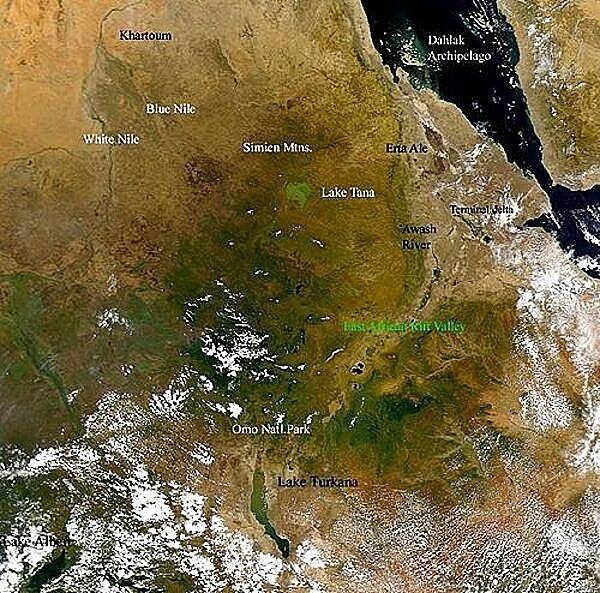
Saint George's Cathedral is an Ethiopian Orthodox church in Addis Ababa noted for its distinctive octagonal form.
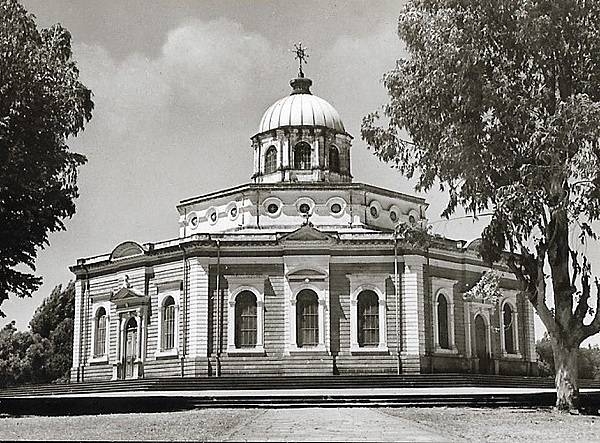
Holy Trinity Cathedral in Addis Ababa is considered the largest and most magnificent of all modern churches in Ethiopia. Originally begun in 1887 as a monastery church, it was expanded to a cathedral according to a European design between 1928 and 1931. Construction was completed in 1943. Today the church commemorates the liberation of Ethiopia from Italian occupation (1936-41). The tombs of the Emperor Haile Selassie, the Empress Menen Asfaw, as well as other members of the former imperial family lie within the cathedral.

Equestrian statue of Emperor Menelik II in Addis Ababa. Menelik is remembered for leading Ethiopian troops against the Kingdom of Italy in the First Italo-Ethiopian War, where he scored a decisive victory at the Battle of Adwa in 1896 and secured Ethiopian independence.
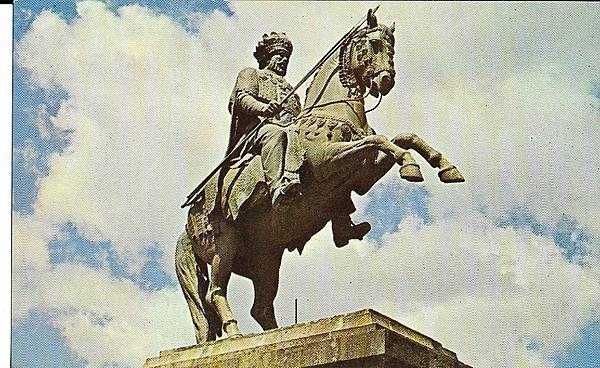
Main gate of the Imperial Palace, Addis Ababa.
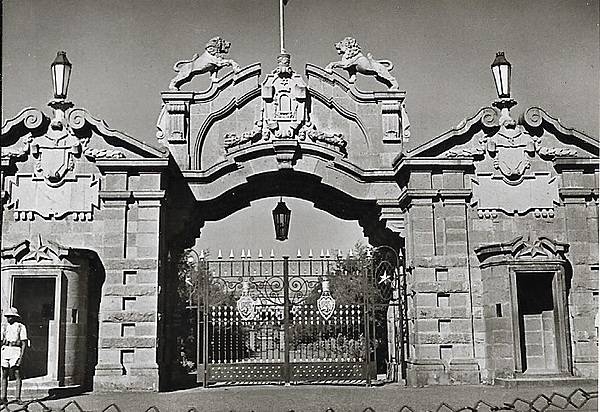
The Lion of Judah Monument is one of the most distinctive landmarks in Addis Ababa. The statue, by sculptor Maurice Calka, was commissioned by Emperor Haile Selassie and erected in front of the National Theater in 1954.
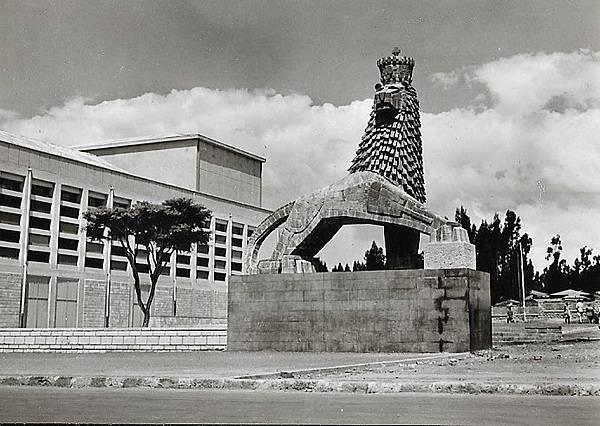
Two ladies in national dress in front of the Lion of Judah Monument in Addis Ababa.
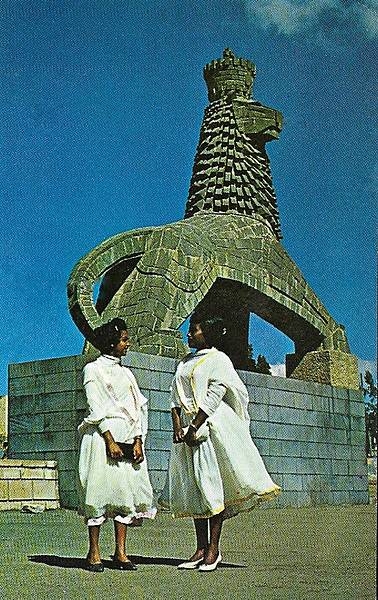
Addis Ababa is the capital and largest city of Ethiopia; it is located on a well-watered plateau surrounded by hills and mountains in the geographic center of the country. The city's population is some 5 million people, with a robust annual growth rate. Governmental initiatives aim to renew the public transport system and improve traffic management to support socio-economic development.
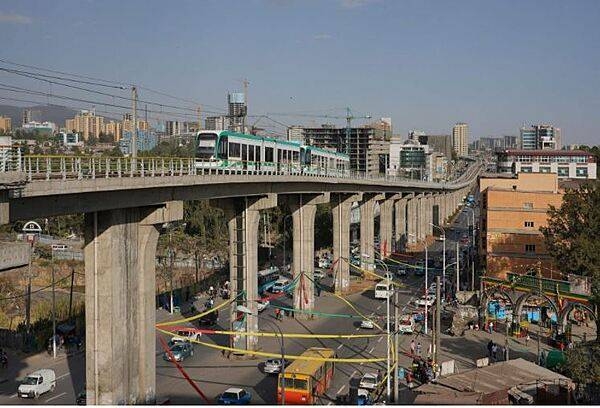
Ethiopia's exports include agricultural products, textiles, leather goods, chemicals, and metals. The bulk of the export and import trade of Ethiopia is channeled through Addis Ababa on its way to or from the ports of Djibouti, on the Gulf of Aden, or Asseb, Eritrea, on the Red Sea.

King Ezana's Stela is a 21-m (69-ft) tall obelisk in the ancient city of Axum. The monument, which dates to the 4th century A.D., stands at the center of the Northern Stelae Park along with hundreds of smaller and less decorated stelae. It is decorated with a false door at its base, and apertures resembling windows on all sides. The obelisk’s semi-circular apex used to be enclosed by metal frames. In 2007-08, the stela was structurally consolidated and today is braced to prevent its leaning any further.
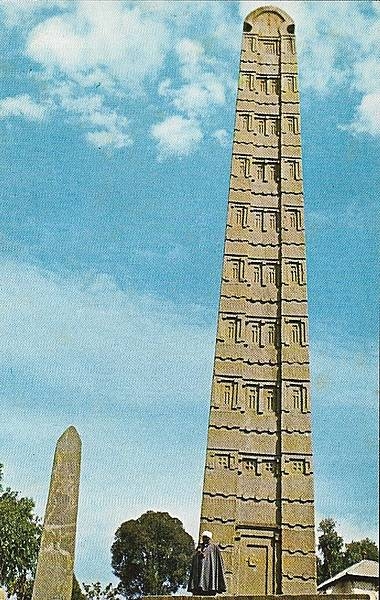
National treasures - reliquaries, crowns, and an ancient velum book - from the Church of Our Lady Mary of Zion in Axum. The church also claims to contain the Ark of the Covenant, but only a single guardian monk, appointed for life, may view and pray before the Ark.
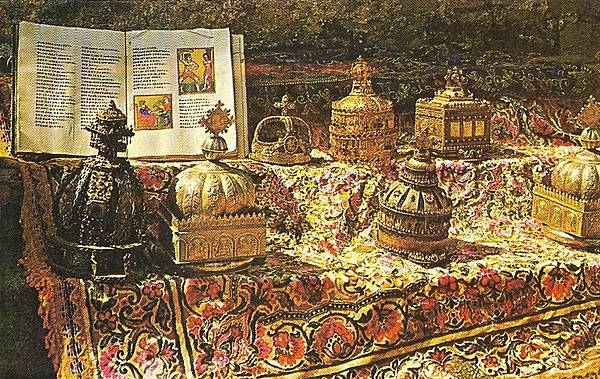
The Royal Enclosure or Fasil Ghebbi (Fasil’s Enclosure) is the remains of a fortress city in Gondar. Founded in the 17th century by Emperor Fasilides (Fasil), it was the home of Ethiopia's emperors. Its unique architecture shows diverse influences including Arab, Hindu, Nubian, and Baroque. The site was inscribed as a UNESCO World Heritage Site in 1979.

Page 01 of 02